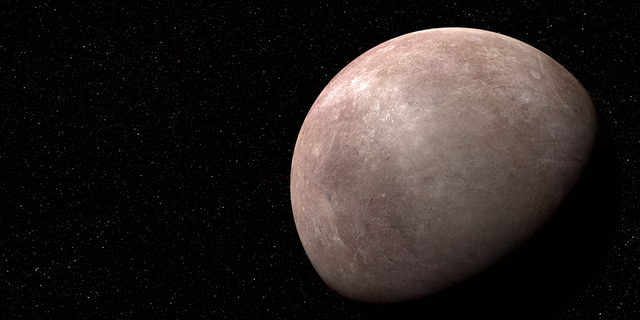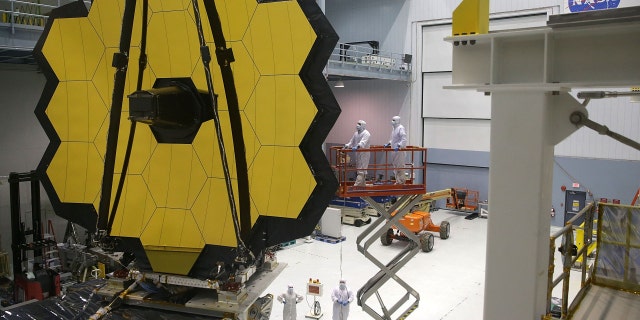NASA's James Webb Telescope hit another milestone on Wednesday, identifying its first exoplanet 41 light-years away that is almost exactly the same size as Earth.
Formally dubbed LHS 475 b, the rocky planet is just 1% smaller than Earth's diameter.
"Webb is bringing us closer and closer to a new understanding of Earth-like worlds outside our solar system, and the mission is only just getting started," Mark Clampin, the Astrophysics Division director at NASA Headquarters, said in a statement.
NASA’s Transiting Exoplanet Survey Satellite first hinted at the planet's existence, which was confirmed by Webb's Near-Infrared Spectrograph.
STRIKING NASA IMAGES REVEALS IO'S VOLCANO-LACED SURFACE

An illustration of the first exoplanet located by NASA's James Webb Telescope about 41 light-years away. (NASA, ESA, CSA, Leah Hustak (STScI))
While LHS 475 b is almost the same size as Earth, the planet is a few hundred degrees warmer and the makeup of its atmosphere is unclear.
Additional observations are set to take place this summer to try to figure out the atmosphere's composition, if it has one at all.
"There are some terrestrial-type atmospheres that we can rule out," Jacob Lustig-Yaeger, a doctoral fellow at the Johns Hopkins University Applied Physics Laboratory explained on Wednesday. "It can’t have a thick methane-dominated atmosphere, similar to that of Saturn’s moon Titan."

The first image released from the James Webb Space Telescope shows galaxies around each other whose light has been bent, NASA officials said. (NASA)

Engineers and technicians assemble the James Webb Space Telescope at NASA's Goddard Space Flight Center in Greenbelt, Maryland. (Alex Wong/Getty Images)
CLICK HERE TO GET THE FOX NEWS APP
The $10 billion Webb Telescope transmitted its first image of the early universe last July.
Since then, it has captured the Stephan's Quintet, a grouping of five galaxies 290 million light-years away; the Carina Nebula, a stellar nursery with brand new stars that were previously hidden; and galaxies with stellar bars, which are elongated features of stars that stretch to a galaxy's outer disks.
Fox News' Julia Musto contributed to this report.
Article From & Read More ( NASA's James Webb Telescope finds first exoplanet almost exactly the same size as Earth - Fox News )https://ift.tt/UbnhC4W
Science
No comments:
Post a Comment